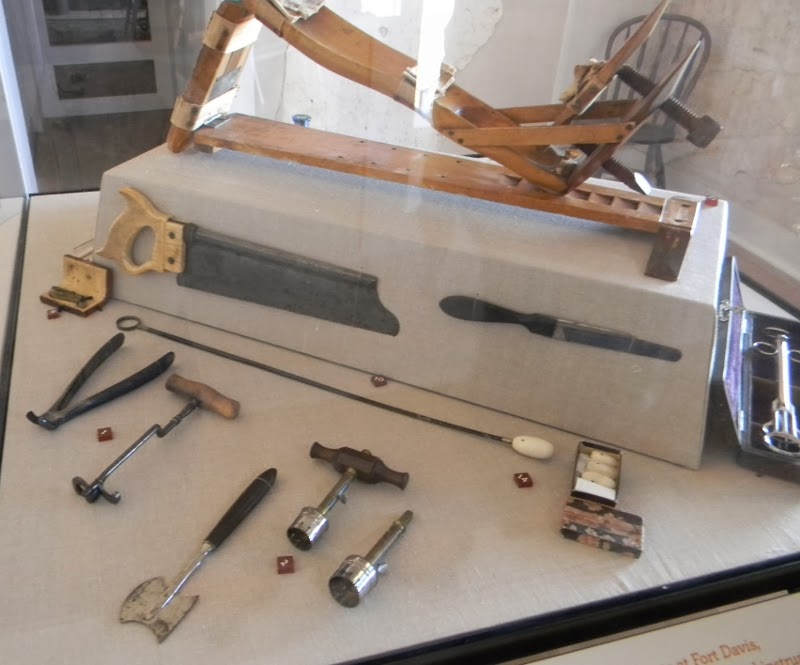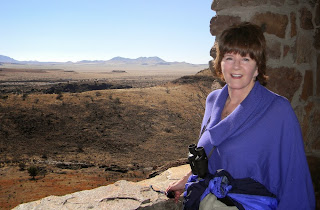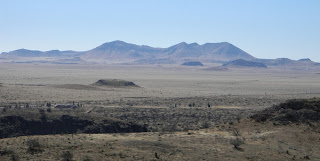On Tuesday morning, we got up and got going early, on the road before 8 AM. The drive to Santa Fe was uneventful, and we checked into our usual campground, now called Suenos de Santa Fe. The manager gave us information on the bus, which leaves from in front of the campground. It worked very well, dropped us a block from the plaza.
The Cathedral was closed for a funeral, so we walked to the Loretto Chapel, with its famous double spiral staircase, with no center support. This is sometimes called a miraculous staircase, due to its unique design, and the legends associated with its construction. Cynthia remembers getting to walk up and down it years ago, because her kindergarten teacher, Sister Margaret Ann, was working in the gift shop. My uncle Bill, a carpenter and a devout catholic, was very impressed with it. He gave me an 8 by 10 photo of the stair about 50 years ago, and I still have the photo.

We then went into St. Michael's, the oldest church in the US, dating back to 1610, when it was a chapel for the Spanish soldiers. In places you can see the original adobe walls. The bell dated to 1356, so was even older than the chapel.
We then proceeded to the New Mexico statehouse, the Roundhouse, in the shape of the Zia symbol. We found fine artwork on every wall, from 20th century New Mexico artists. After viewing the top floor, we took a nice lunch break at Los Jalepenos restaurant. After lunch, we returned to the capitol, to see even more artwork. At some point, we hit the art overload line, and decided to leave.
We toured the Cathedral on our way home, famous for "La Conquistadora", a statue of Our Lady brought over from Spain, which survived the Pueblo Rebellion of 1680. It was built in the French style by Archbishop Lamy, made famous by Willa Cather's book, Death Comes for the Archbishop. The altar screen has images of eight New World saints, and we worked to identify them, including Katherine Drexall, Peter Claver, Rose of Lima, and Katheri Tekawitha. It is often a bit of a puzzle as to which saint is depicted in each image, but there are usually enough hints in the image, for a knowledgeable person to figure it out.
On Wednesday, we hit the art galleries. We started at Nedra Matteucci, one of the older and better known galleries. The jewelry expert there was able to show us a sample of Tufa casting, in which a piece of Tufa stone is carved as a mold for casting. This was discussed in the Turquoise museum, but we had asked at other galleries, and no one knew anything about it.
We proceeded down Canyon Road, dropping into a number of galleries. Some of the galleries did have interesting work. When we went into a ceramics gallery, the lady turned on the lights, as we were the first visitor. We chatted with her at some length. She suggested that we go to the railyard area, which had interesting galleries. After lunch at a cafe, we decided to go to the railyard. The railyard galleries have more contemporary art. Much of it was too minimalistic for our tastes, including a series of white on white paintings, each with a different pattern of rectangles. The inflated metal sculpture was fabricated out of flat sheets, and then "inflated" with high pressure to form the shape that you see.
 |
| Inflated metal |
The photo of the trains contrasts the old and the new. The new is the "Railrunner", which is a commuter train which goes from south of Albuquerque to Santa Fe. Our campground in Albuquerque was near a Railrunner station.
On Thursday, we got up early to drive home. The drive north on I-25 was uneventful, sunny, pleasant, with light winds, and few stops. We got to Cynthia's house at 2 PM, and I got home before 4 PM. A good trip, but perhaps more desert and minimalist art than Cynthia would prefer.

























